We explain everything about Spain, how is its geography, culture and traditions. In addition, what are its characteristics, economy and more.
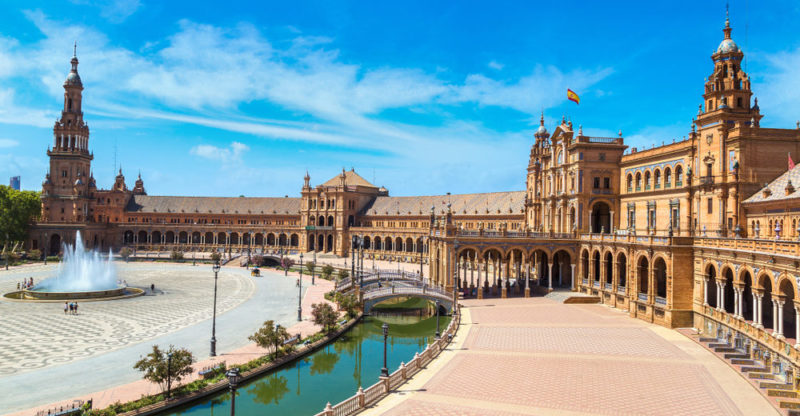
Spain
Spain is a national state whose official name is the kingdom of Spain which is located in southern Western Europe and North Africa. Limit west with Portugal, northeast with France and to the south with Morocco. It is composed of 17 autonomous communities and two autonomous cities, and is a full member of the United Nations Organization (UN) and the European Union.
Its form of organization is the parliamentary monarchy under a form of democratic government, and Its capital is the city of Madrid. Their customs, history and geography make Spain one of the most visited countries in the world and one of the main world economies.
It was one of the great territorial empires between the fifteenth and eighteenth centuriesso their culture, their language and many of its customs can be found in much of the countries of the American continent and in some countries in Africa.
Spain has a territorial extension of 505,990 km² And it is the fourth largest country in the European continent (behind Russia, Ukraine and France). In Africa, the territory of Spain extends through the cities of Ceuta and Melilla and the Canary Islands, Chafarinas, Alhucemas, Alborán Island and the Peñón de Vélez de la Gomera.
Why is it called that? There are several theories about the origin of the name “Spain.” A theory suggests that it comes from the word Phoenician I-Shaphan -imwhich means “island of rabbits.” It is believed that the Phoenicians referred to the Iberian Peninsula with this name due to the abundance of rabbits in the region.
Another theory states that the name “Spain” derives from the Latin term Hispaniawhich was used by the Romans to refer to the Iberian Peninsula. It has also been suggested that it could have its roots in the Celtic word Spania either Spanwhich means “land of rabbits.”
See also: Europe
Characteristics of Spain
- It has an area of 505,990 square kilometers.
- Its population amounts to 47,600,000 inhabitants. Its population density is 94 inhabitants per square kilometer.
- The capital is the city of Madrid.
- Its official language is Spanish, although many other regional languages such as Basque, Catalan and Galician are also spoken.
- His predominant religion is the Catholic.
- Its predominant climate is the temperate Mediterranean.
- Some of the most important painters in history, such as Pablo Picasso and Salvador Dalí, were Spanish.
- Miguel de Cervantes, Lope de Vega and Federico García Lorca are some of their main referents of Spanish literature.
- It was a great empire between the 15th and 18th centuries.
- Its main economic activities are agriculture, industry and tourism.
- Its official currency is the euro, since it is part of the European Union.
Extension, population and capital of Spain
Spain is a country formed by seventeen autonomous communities and cities of Ceuta and Melilla In Africa. These communities, in turn, are divided into provinces that have municipalities.
The Spanish autonomous communities are:
- Galicia. It is a Spanish community located northwest of the country and is formed by four provinces: Lugo, La Coruña, Orense and Pontevedra. Its capital is Santiago de Compostela.
- Principality of Asturias. It is a Spanish community that holds the title of Principality for historical reasons and is located north of the country. It is formed by a single province and its main cities are Gijón, Oviedo and Avilés.
- Castilla y León. It is a Spanish community located in the north of the Peninsula and is divided into nine provinces: Ávila, Burgos, León, Palencia, Salamanca, Segovia, Soria, Valladolid and Zamora.
- Cantabria. It is a Spanish community located north of the country. It is formed by a single province and 102 municipalities and its capital is the city of Santander.
- the Basque Country. It is a Spanish community located north of the country and limits with France. It is formed by the provinces of Álava, Vizcaya and Guipúzcoa and its most populated cities are Bilbao, Vitoria and San Sebastián. The official languages of the Basque Country are Basque and Spanish.
- Rioja. It is a Spanish community located north of the country and is a uniprovincial territory that is divided into 174 municipalities. It is the smallest Spanish community and is characterized by the seven rivers that compose it. Its most populous capital and city is Logroño.
- Navarre. It is a Spanish community located north of the Peninsula and has capital in the city of Pamplona. It is a uniprovincial territory that is divided into 272 municipalities.
- Aragon. It is a Spanish community located northeast of the Iberian Peninsula. It is divided into three provinces: Zaragoza, Huesca and Teruel. The city of Zaragoza is the capital of this community and is the most populous city.
- Catalonia. It is a Spanish community located northeast of the Peninsula, which has as a capital the city of Barcelona. Catalonia is formed by four provinces: Barcelona, Tarragona, Gerona and Lleida and is one of the communities with the greatest economic development. It borders the north with France and its official languages are Spanish and Catalan.
- Valencian Community. It is a Spanish community located southeast of the Iberian Peninsula. It is formed by the provinces of Castellón, Valencia and Alicante. Valencia is the capital city and the most populated in the community.
- Balearic Islands. It is a uniprovincial community located in the Mediterranean Sea, off the coast of the Iberian Peninsula. It is an archipelago formed by the islands of Mallorca, Menorca, Cabrera, Ibiza and Formentera, which are divided into 67 municipalities. Palma de Mallorca is the capital city of the islands.
- Murcia. It is a Spanish uniprovincial community that is located southeast of the peninsula and consists of 46 municipalities. Its most populous capital and city is Murcia, which is located southeast of the region.
- Castilla-La Mancha. It is a Spanish community located in the center of the Peninsula. It is formed by the provinces of Albacete, Ciudad Real, Guadalajara, Cuenca and Toledo, which are composed of 919 municipalities.
- Community of Madrid. It is a Spanish community located in the center of the Peninsula and with capital in the city of Madrid (which is also the capital of the country). It is a uniprovincial community that is formed by 179 municipalities.
- Estremadura. It is a Spanish community located in the southwest of the country and with capital in the city of Mérida. It is composed of two provinces: Cáceres, located to the north, and Badajoz, to the south, which total 388 municipalities.
- Autonomous Community of Andalusia. It is a Spanish community located south of the Peninsula and is composed of the provinces of Granada, Jaén, Córdoba, Sevilla, Huelva, Cádiz, Málaga, Almería and 786 municipalities. It is the most populous community in Spain and its capital is located in the city of Seville.
- Canary Islands. It is a Spanish community located in the Atlantic Ocean, off the Northwest African coast, which is divided into two provinces. It is an archipelago formed by the islands of La Palma, El Hierro, La Gomera and Tenerife, which form the province of Santa Cruz de Tenerife, and Lanzarote, Fuerteventura and Gran Canaria, which form the province of La Palma.
The form of government of Spain is the parliamentary monarchy: The king is head of state but who governs is the president and the legislative power.
The Spanish Legislative Power is in the hands of the General Courts, composed of the Senate and the Congress of Deputies. The representatives of the Cortes are chosen directly by Spaniards over 18 every four years. The president is then elected by these assemblies.
Its capital is the city of Madrid. It has a population of 3,331,000 inhabitantswhich represents 7.1 % of the country’s total.
Climate, relief and hydrography of Spain
Much of the Spanish territory is constituted by the Great Central Plateauwhich is at an average height of 650 meters above sea level. In addition, the territory of Spain is formed by several mountainous chains such as the Pyrenees, the Sierra Nevada and the Cantabrian mountain range, so it is one of the most mountainous countries in Europe.
Due to the diversity of reliefs and its geographical location, Spain is a country with various types of climate. Different climates in Spain are usually classified as: oceanic tempered, Mediterranean temperate, mountain cold and warm subtropical.
- Mediterranean temperate climate. It extends on the Mediterranean coast and in almost the entire peninsula. It is characterized by its dry and warm summers, and its wet and cold winters. It is the predominant climate of the country.
- Oceanic temperate climate. It extends through the north of the country, an area where rainfall is usually abounded throughout the year. This type of climate has a great moisture and temperatures tempered with a low thermal amplitude between winter and summer.
- Cold mountain climate. It extends through the mountainous chains of Spain, such as the Cantabrian mountain range and the Pyrenees, and is characterized by its low temperatures and abundant rainfall (which usually occur in the form of snow). This type of weather can be seen from 1000 meters above sea level.
- Warm subtropical climate. It extends in the Canary Islands, which are located in the Atlantic Ocean, near Africa and the Tropic of Cancer. It is characterized by its high temperatures throughout the year.
The hydrography of Spain is conditioned by the climatic characteristics of the Mediterranean climate, so Its rivers have little flow, especially in the dry months of summer. The most important are the Tagus, the most extensive in the country with 1000 kilometers long, the Ebro, the Duero and the Guadalquivir.
Since Spain is a country with a wide diversity of climates and reliefs, Its fauna and flora are the most varied in the continent.
The fauna of Spain changes according to the geographical area. In the Iberian Peninsula you can find mammals such as the Red Zorro, the Iberian lynx, the montés cat, the deer, the Iberian goat, the Iberian hare, the bat, the Iberian wolf, the mink and the squirrel.
In addition, amphibians such as the Iberian Triton, the Iberian departure and frog; reptiles like Mediterranean turtle, the chameleon, the lizard and varied species of lizards and snakes. Among the most prominent birds of the Peninsula are the Iberian Imperial Eagle, the Black Vulture, the Bleach, the Gorrión and the Urraca.
In the salt and sweet water courses of Spain they live fish such as lampreas, sturions, tans, eels, bermejuelas, barbos, calendinos, colmillejas, pejerreyes and lubinas. In addition, in its coast there are a lot of marine animals such as dolphins, whales, jellyfish and sperm whales.
In the Canary Islands area many of the endemic species were extinguished And today most of the species that inhabit there were introduced. Some native animals of these islands are birds, such as Tenerife Blue Pinzón, the Canarian Mosquito net and the Canarian tarabilla.
The flora of Spain varies according to the geographical area, because in each region there are variations of relief, temperature and rainfall. This country presents the largest diversity of flora species in Europe.
In the northern part of Spain the grasslands and The Explucifolia vegetation. On the other hand, perennifolias, aromatic and thickets abound in the southern zone.
Among the most representative tree species in Spain are: The oak (which is considered the national tree), the Mediterranean cork oak, various species of pine trees, the Mediterranean oak, the eucalyptus, the sabina, the beech, the fir, among many others.
Other plant species that can be found in Spanish territory are: the carnation (which is the National Plant of Spain), Spanish bells, grenades, heather, broom and aromatic herbs such as thyme.
Culture of Spain
The official language of Spain is the Spanish. However, in many regions other languages are also spoken. In Catalonia, the Balearic Islands and in Aragon are spoken of Catalan, in the Basque Country Euskera is spoken, in Galicia and the northwest of the country is spoken Galician And in the Valencian Community there is Valencian.
His official religion is Catholicismprofessed for more than 80 % of the population. The Islam and Judaism They are some of the country’s minority religions.
Spain is a country that is characterized by great cultural wealth, with exponents in the field of art, music, architecture and lyrics. Some of the most recognized Spanish artists are:
In art:
- El Greco (1541-1614). He is considered one of the referents of the Spanish Renaissance and, although he was originally from Crete, he lived much of his life in Toledo. He was an exponent of Mannerism and some of his most recognized works are The gentleman of the hand in the chest, The worship of the shepherds, The burial of the Count of Orgaz and Toledo view.
- Diego Velázquez (1599-1660). He was a Sevillian painter of the Baroque and one of the main referents of the Spanish Golden Age (stage that was characterized by the flourishing of Spanish literature and art). He was a painter of the court of King Felipe IV and among his most recognized works they stand out Las Meninas, THE VENUS OF THE MIRROR, Aracne’s fable, Baco’s triumph and The jester Don Sebastián de Morra.
- Francisco de Goya (1746-1828). He was a Spanish painter who covered different styles and is considered the father of modern art. His most outstanding works are The naked morning, The dawn dressed, Carlos IV’s family, Saturn devouring his son and May 3 in Madrid.
- María Blanchard (1881-1932). She was a Spanish painter considered “the lady of Cubism.” Woman with fan and Woman with guitar They are some of his most recognized works.
- Pablo Picasso (1881-1973). Born in Malaga, he stood out in painting and sculpture, and was one of the most influential artists of the twentieth century. Together with Georges Braque developed Cubism, an artistic movement characterized by the use of geometric figures. Some of his most recognized works are Guernica, The ladies of Avignon, The three musicians, Las Meninas and Woman before the mirror.
- Juan Gris (1887-1927). He was a Spanish painter and representative of Cubism who developed much of his work in Paris. Among his most outstanding works are Portrait of Pablo Picasso, Guitar and pipe and Bottles and knives.
- Joan Miró (1893-1983). He was a Spanish painter and sculptor born in Barcelona who was characterized by his abstract art and was part of the surrealist current. Some of his most recognized works are The Masía, Harlequin Carnival, Catalan landscape and Waking up at dawn.
- Salvador Dalí (1904-1989). He was a Spanish painter born in Gerona (Catalonia) and one of the main representatives of surrealism. Some of his most representative works are The persistence of memory, Soft construction with boiled beans, Narcissus metamorphosis and Dream caused by the flight of a bee around a grenade seconds before waking.
- Remedios Varo (1908-1963). She was a Spanish surreal painter. Icon and The alchemist They are some of his most prominent works. During World War II he exiled to Mexico, where he continued his career until his death.
In literature:
- Santa Teresa de Jesús (1515-1582). She was a Spanish nun and writer. It is considered one of the great figures of Spanish literature. His Book of Life He is one of the most important in the history of the country’s literature. Road of perfection and The foundations They are other of his outstanding works.
- Miguel de Cervantes (1547-1616). He was a poet, novelist and playwright of the Spanish Golden Age. Your novel The ingenious gentleman Don Quijote de la Mancha It is considered one of the most important works of universal literature. Other works they wrote were Exemplary novels and The Galatea.
- Lope de Vega (1562-1635). He was a playwright and poet and one of the main literary exponents of the Spanish Golden Age. He covered many literary genres and revolutionized the dramatic genre. His books of sonnets and poems are recognized, and other works such as Fuenteovejuna, The Olmedo Knight, The Hortelano dog and Crete’s labyrinth.
- Francisco de Quevedo (1580-1645). He was a Spanish poet icon of the Golden Age, who also wrote narrative and theater. His most representative works are Buscón’s life, The demonized sheriff, The cradle and the burial and Dreams and speeches.
- Gustavo Adolfo Bécquer (1836-1870). He was a Spanish post -river poet who is considered the precursor of Spanish modern poetry. Is very recognized for its Rhymes (86 short poems), Legends and his work Letters from my cell.
- Benito Pérez Galdós (1843-1920). He was a Spanish novelist considered one of the most important in Spanish history. His most recognized works are Perfect Doña, Fortunata and Jacinta, Marianela and Mercy.
- Emilia Pardo Bazán (1851-1921). She was a Spanish writer, journalist and translator introducer of naturalism in Spain. It was one of the precursors in the struggle for women’s rights in the country. Los Pazos de Ulloa and Insolation They are some of his most important works.
- Miguel de Unamuno (1864-1936). He was a Spanish writer and philosopher and representative of the so -called 98 generation (group of writers of the late nineteenth century). With his works he covered different genres such as the novel, poetry, essay and theater. His most outstanding works are Fog, Abel Sánchez, San Manuel Bueno, martyr and Around Casticism.
- Antonio Machado (1875-1939). He was a Spanish poet, narrator and playwright and one of the main representatives of the 98 generation. His most important works are Loneliness, Campos de Castilla, Juan de Mairena and La Lola goes to the ports.
- Federico García Lorca (1898-1936). He was a Spanish poet who was part of the so -called generation of 27 and is considered one of the greatest Spanish literary referents of the twentieth century. His main works are Yerma, Blood weddings, Bernarda Alba’s house, Gypsy Romancero and Poet in New York.
- Carmen LaForet (1921-2004). She was a Spanish writer whose novel entitled Nothing It is considered one of the great works of Spanish literature of the twentieth century.
Festivities and traditions of Spain
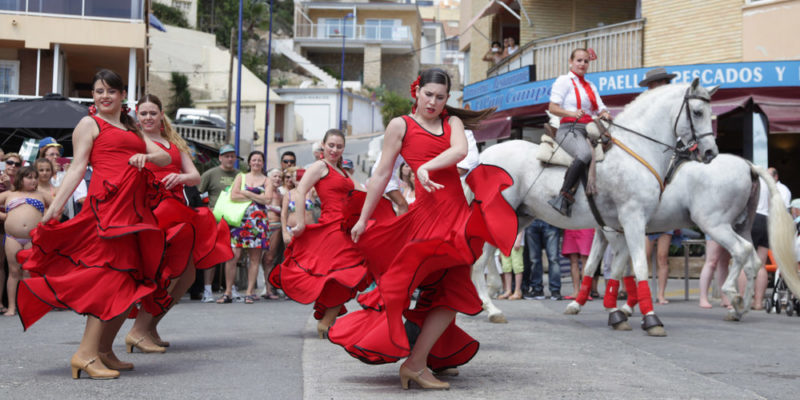
Spain was throughout its history of cultures and civilizations such as Muslim, Phenicia, Roman, Greek, Carthaginian and Visigoth. All these cultures left their contribution, so It is a very rich and varied country from the cultural point of viewwith a lot of artistic representations, festivities, gastronomy, music and dances.
Due to the extension of its territory, Spain has different customs and traditions according to each area. Some of the most representative are:
- Flamenco. It is a musical genre of the Andalusia region, in southern Spain, which is characterized by its song, its dance and the touch (the guitar). The instruments used to execute this genre are castanets, tambourines, guitars and tacos and palms of the dancers or public present.
- The Camino de Santiago. It is an itinerary that attracts premises and foreigners who walk the way to the cathedral of Santiago de Compostela, located in Galicia. This itinerary is composed of a large number of routes that extend in Europe and that converge in this city in the province of La Coruña.
- Valencia Fallas. It is a set of parties that take place from March 15 to 19 in Valencia in honor of San José. It is characterized by its great monuments and sculptures (Ninots), made of paper, wood and cardboard, which are exhibited in different parts of the city and are burned on the last day of the celebration. It is also a party in which musical shows, pyrotechnics and religious activities are carried out.
- The April Fair. It is a party that is held in Seville one or two weeks after Holy Week and in which booths are installed in the streets where family and friends meet. This holiday is characterized by their music, dances and gastronomy.
- The San Isidro festivities. It is a party that takes place every year in Madrid around May 15, the day on which San Isidro is commemorated, patron of the city. On this date traditions such as pilgrimage in the Pradera de San Isidro and musical shows, traditionalists and typical gastronomy offer are performed.
Homeland symbols of Spain
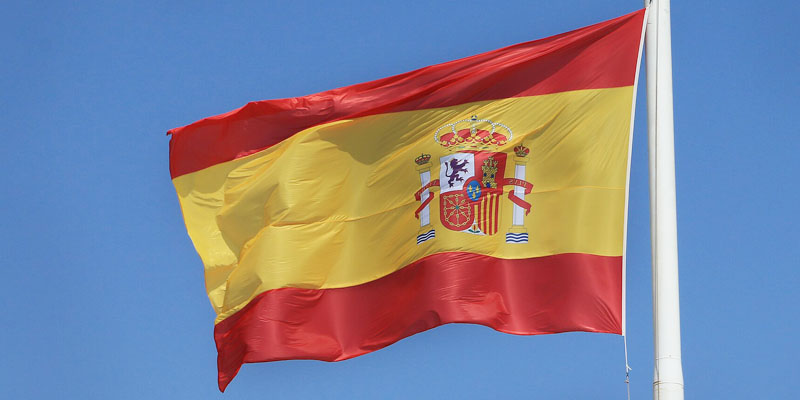
The national symbols of Spain are:
- The flag of Spain. It is formed by three horizontal stripes, two reds up and down and a yellow, twice as much wide than the reds, in the center. On the yellow strip is the national shield. It was adopted in 1785.
- The National Anthem of Spain. It is known as “the real march.” It was popularized without lyrics, so it is not sung during its execution. Nor is the author of his music known exactly. The real march is used as a national anthem since 1936.
- The coat of arms of the King of Spain. The shield is divided into four barracks representing the historical kingdoms of Spain. In the upper left, Castilla (represented by a red castle on white background); in the upper right, León (represented by a lilac lion on white background); in the lower left, Aragon (represented by red and golden bars in the form of a cross of San Jorge on white background); and in the lower right, Navarra (represented by golden chains on red background). In the center is a blue oval shield that shows the emblems of Bourbon’s house, to which the Spanish royal family belongs. A royal crown is found on the shield. On both sides of the shield are two columns of Hercules with a band that says “Plus ultra” (in Latin, “beyond”). It was adopted in 1981.
Economic activities of Spain
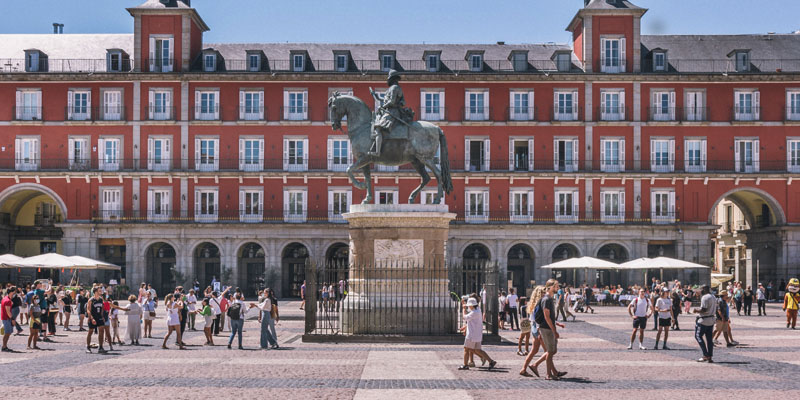
The economy of Spain is the fourth within the European Union and the sixteenth of the world.
Its most important economic activities are:
- Agriculture. The production of barley, wheat, oatmeal, rye and corn stands out. A remarkable feature of the Spanish agricultural sector is that it is the European leader in agroecological production since it produces 17 % of the total of this type of products throughout the European Union.
- The industry. The automotive industry, the pharmaceutical and agro -industrial industry such as the production of preserves, cold cuts and sausages stand out.
- Tourism. It is one of the activities that generates the most income in Spain. Spain is fourth tourist destination from all over the world and receives more than 80 million visitors every year. Some of the most visited attractions and places in Spain are the Mosque of Córdoba, the Sagrada Familia in Barcelona, the cathedral of Santiago de Compostela, La Alhambra in Granada, Real Alcázar in Seville, the Royal Palace and the Prado Museum in Madrid and Plaza España in Seville. Barcelona, the Costa del Sol and the Balearic Islands.
- Its official currency is the euroand its Main commercial partners are the countries of the European Union such as France, Germany, Portugal and England.
History of Spain
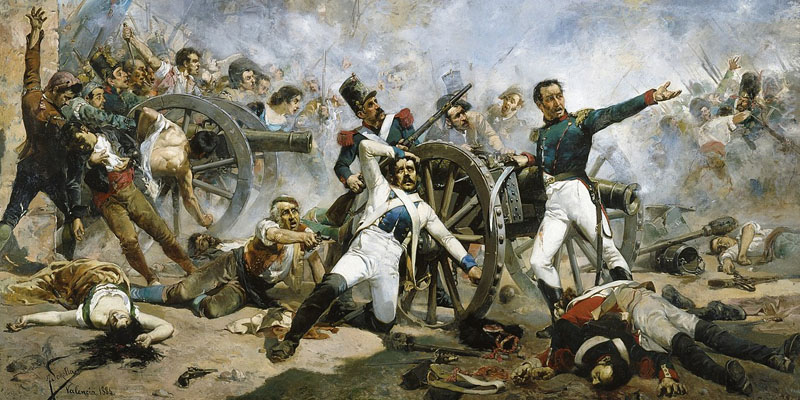
The Iberian Peninsula was inhabited since the Paleolithic period. In the ninth century a. C. Celtic populations arrived who merged with Iberian populations and gave rise to the Celtibean culture. Throughout the first millennium a. C. In addition, Phoenician, Greek and Carthaginian colonies were installed.
After the defeat of the Carthaginians against the Romans (218-201 BC), the Peninsula began to be Romanized. The peoples that resisted were defeated and Hispania became part of the Roman Empire. In the 5th century, some Germanic peoples invaded Hispania and were expelled or conquered by another Germanic people, the Visigoths, who after the fall of the Roman Empire established a kingdom centered on Tolosa (France) and then in Toledo (Spain).
The Visigothic kingdom adopted Catholicism and fell to a Muslim invasion in 711. The Muslim domination of the Iberian Peninsula crossed various stages, such as the Caliphate of Córdoba or the Almoravide and Almohade dominations. Meanwhile, some Christian kingdoms began the calling call that led to the conquest of Toledo (1085), the victory in Las Navas de Tolosa (1212) and the defeat of the last Muslim kingdom in Granada (1492).
At the end of the 15th century, The union of the crowns of Castilla and Aragonwhich was due to marriage between Isabel I of Castilla and Fernando II of Aragon (the Catholic Monarchs), produced the political unity of Spain. Under the reign of Carlos I (1516-1556) the Aztec and Inca empires were conquered with Felipe II (1556-1598) Spanish hegemony was reinforced by incorporating Portugal (1580), which separated in 1640.
The first King Bourbon was Felipe V (1700-1746), whose Asunción caused the Spanish War of Succession (1701-1713). The Napoleonic invasion in 1808, on the other hand, began the War of Independence (1808-1814), which concluded with the return of Fernando VII to the throne but motivated the emancipation of the Spanish-American colonies.
During the 19th century there were absolutist and constitutional periods. During the reign of Alfonso XIII the dictatorship of Primo de Rivera (1923-1930) was installed and in 1931 the Second Republic was proclaimed. In 1936, a military uprising began To the Spanish Civil War (1936-1939), which led to the dictatorship of Francisco Franco (1939-1975).
During the so-called Spanish transition (1975-1978) a new Constitution was promulgated. This promoted the succession of democratic governments within the framework of a constitutional monarchy, headed by Juan Carlos I (who abdicated in his son Felipe VI in 2014), which allowed the entry of Spain into the European Economic Community (current European Union) in 1986.
Continue with:
References
- Economic Activities (2023) Economic activities of Spain. https://activitieseconomicas.org/
- Government of Spain (SF) Autonomous communities. https://ad administration.gob.es/
- Sadurni, JM (2023) The uncertain origin of the Valencia Falla. https://historia.nationalgeographic.com.es/
Yordán, E. (2022) Relief of Spain. https://www.ecologiaverde.com/





